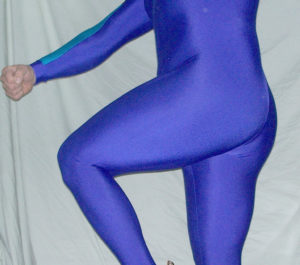Elastomeric Fibers
Fibres with elastic capability
Elastomeric fibers are those fibers that possess extremely high elongations at break and that recover fully and rapidly from high elongations up to their breaking point. The fibers are all used in specialized applications where high elasticity is necessary within the textile structure. An Elastomer is a polymer with the physical property of elasticity. The elastomer is a term derived from elastic polymer, which is often used interchangeably with the term rubber.

Elastomeric Fibers
Elastomeric fibers are those fibers that possess extremely high elongations (400%-8001) at the break and that recover fully and rapidly from high elongations up to their breaking point.
Elastomeric fibers include the crosslinked natural and synthetic rubbers, spandex fibers (segmented polyurethanes), anidex fibers (crosslinked polyacrylates) and the side-by-side biconstituent fiber of nylon and spandex (Monvelle). The fibers are all used in specialized applications where high elasticity is necessary within the textile structure.
RUBBER
Rubber fibers from natural sources have been known for over 100 years. Natural rubber in commerce is derived from coagulation of Hevea brasiliensis latex and is primarily -polyisoprene, a diene polymer.
Rubber fibers exhibit excellent elastic properties but are sensitive to chemical attack, thereby limiting their usefulness.
Rubber fibers are manufactured by several companies as rubber fiber or under trade names such as Buthane, Contro, Hi-Flex, Lactron, Lastex, and Laton. Rubber fibers show good elastomeric properties and reasonable aesthetic properties particularly as the core of a textile yarn structure.
SPANDEX

Spandex fibers are elastomeric fibers that are >85% segmented polyurethane formed through the reaction of a diisocyanate with polyethers or polyesters and subsequent crosslinking of polyurethane units.
The spandex fibers resemble rubber in both stretch and recovery properties but are far superior to rubber in their resistance to sunlight, heat, abrasion, oxidation, oils, and chemicals. They find the widest use of any of the elastomeric fibers.
Spandex is widely used and sold as an elastomeric fiber under that designation or under such trade names as Cleerspan, Glospan, Lycra, or Numa. Spandex possesses excellent elastomeric properties and acceptable aesthetics for use in constructions requiring such a fiber. Spandex is dull, but luster may be improved with brighteners.
Anidex
Anidex fibers are defined as fibers containing polymers that are at least 50%of one or more polymerized acrylate esters. Anidex fibers are formed through emulsion copolymerization of acrylate esters with reactive cross-linkable comonomers such as -methylolacrylamide.
Anidex fibers apparently did not have sufficient differences in properties to become an economic success and are no longer being produced.
Nylon-Spandex Biconstituent Fiber
An inherent problem with elastomeric fibers is their low strength and limited abrasion resistance. A new biconstituent elastomeric fiber-Monvelle has been introduced to answer these problems. The fiber is a side-by-side bicomponent fiber containing nylon and spandex. The fiber is melt spun by special spinnerets to form the fiber.








